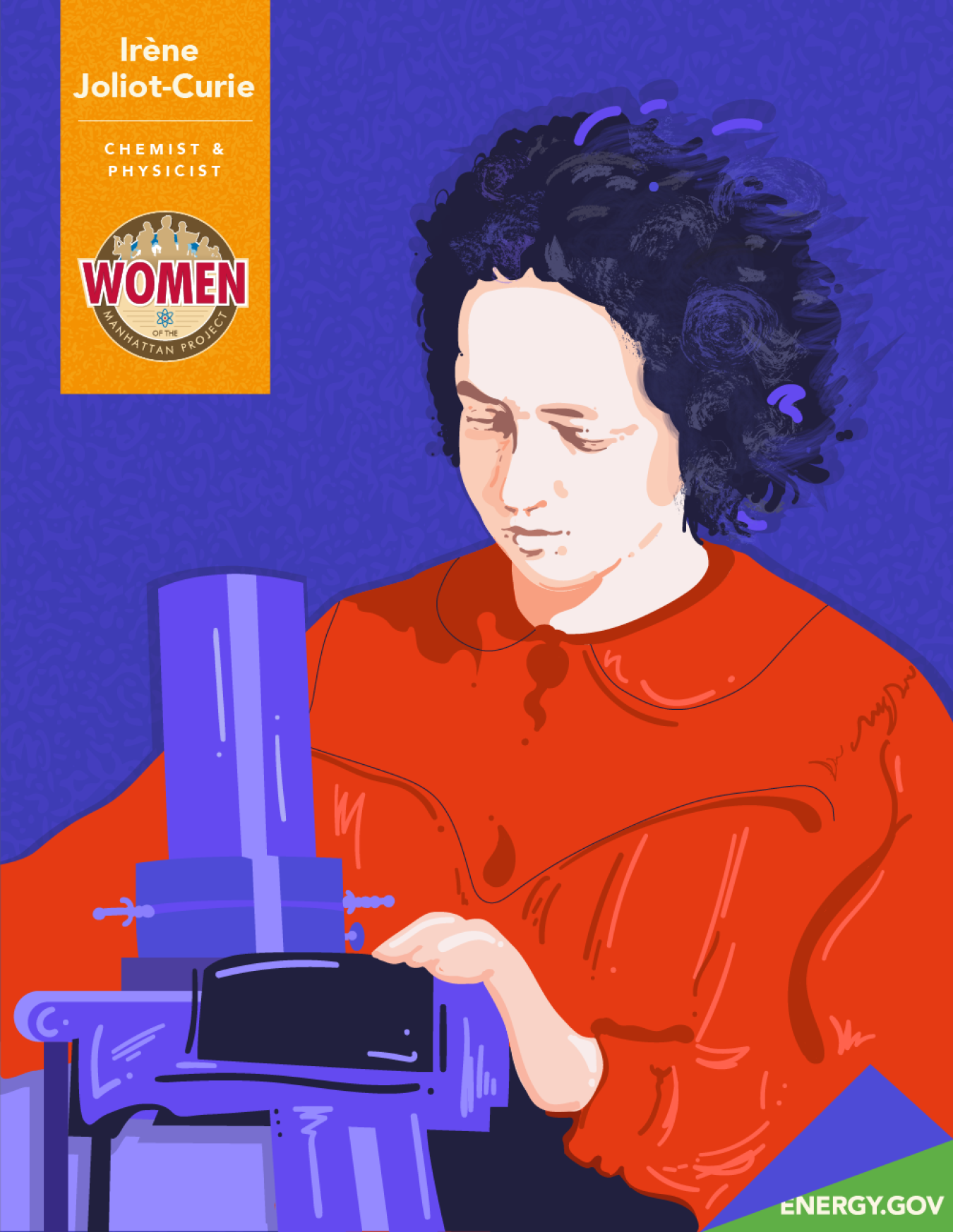
It’s Women’s History Month on Energy.gov. During the month of March, we’re highlighting the great contributions to science, technology, engineering and mathematics (STEM) fields made by women who worked on the Manhattan Project, the top-secret program during World War II that ushered in the nuclear age. See the rest of our coverage at energy.gov/manhattanproject.
Irène Joliot-Curie is the daughter of famous scientist Marie Curie. But Joliot-Curie is famous in her own right -- as a Nobel Prize winner, science groundbreaker, and talented mathematician.
Here are some more facts about Irène Joliot-Curie that may surprise you:
She was home-schooled by many well-known French scholars and later attended the Collège Sévigné and the Sorbonne. But World War I cut her college studies short.
During WWI, she and her mother worked as nurse radiographers in field hospitals -- using the X-ray equipment created by her parents' research.
After the war, Irène taught a young chemical engineer, Frédéric Joliot, who later became her husband and research partner. The duo discovered the positron and neutron, but they didn’t claim these discoveries, which were credited to other researchers years later.
Although they didn't work directly on the Manhattan Project, Irène and Frédéric's research was instrumental in nuclear science and creating the atomic bomb. The couple won a Nobel Prize for Chemistry in 1935 for their work in artificial radiation, which they did by exposing aluminum foil to alpha particles.
Irène was active in promoting women’s education, and had a son and a daughter who also became noted scientists. She died from leukemia at the age of 59, after years of radiation exposure.